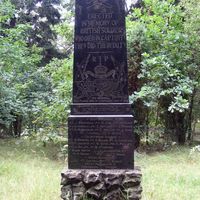Saw
8.21

Overview
Piła, historically known as Schneidemühl, is a city located in northwestern Poland, within the Greater Poland Voivodeship. Its history dates back to the 14th century, when it was established as a settlement around a water mill. It received town rights in the 15th century and developed rapidly thanks to an economy based on agriculture, crafts, and trade. The city has experienced numerous historical upheavals, including Prussian rule after the First Partition of Poland and significant destruction during World War II, when it was 70% destroyed, with its center 90% in ruins. After the war, the city was rebuilt almost from scratch, resulting in modern architecture. Among Piła's historic landmarks are the modernist Church of St. Anthony, the neo-Baroque Church of the Holy Family, and former 18th and 19th-century buildings, including the house of Stanisław Staszic, which now serves as a museum. Culture thrives in Piła thanks to numerous institutions such as the Regional Cultural Center "Fabryka Emocji," the Youth Cultural Center, and events like the Days of Piła and theater festivals. The city offers a rich sports scene with volleyball and speedway teams. Interestingly, Piła is also known for being referenced in song lyrics and pop culture, highlighting its unique character. In recent years, Piła has gained importance as an economic hub, though it also faces challenges related to youth outmigration. Its diverse landscape, abundant green areas and lakes, as well as its transportation system, make Piła an attractive place to live and relax.
Location
Tertiary Administrative Division
Trzcianka
Country
2025 Wizytor | All Rights Reserved


